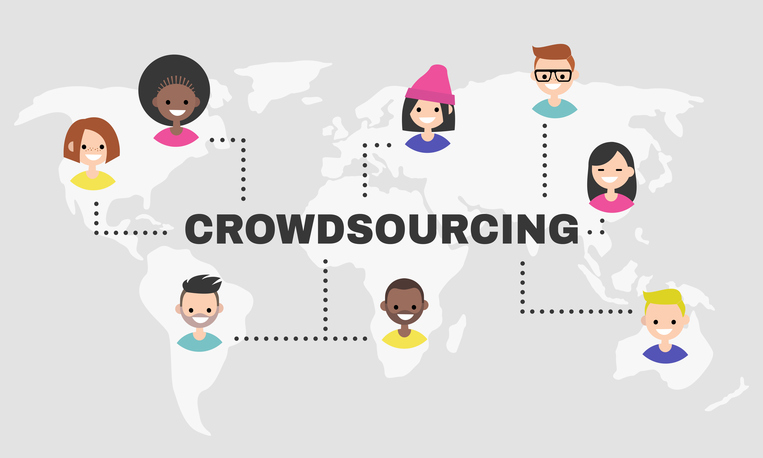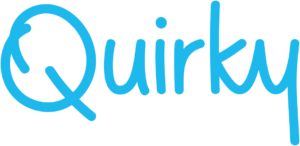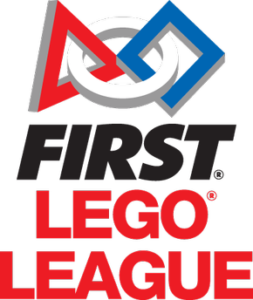When businesses are planning to put out a new product or resolve an issue with their current lineup, they often neglect a potentially powerful solution to their problems. Crowdsourcing is a method of development where businesses look to their customers for answers, instead of a more traditional team of designers and developers. Crowdsourcing has become a phenomenon over the years and may be a powerful method to grow your business and increase profits.
Table of contents
When products are crowdsourced, businesses often hesitate to mention from where they got their ideas, but recent studies have shown that this approach may be a mistake. Crowdsourcing isn’t a taboo subject or something of which to be ashamed. Instead, businesses can benefit by viewing crowdsourcing as a powerful tool to create, troubleshoot, and market new products.
The Benefits of Crowdsourcing
People love the idea of a product that was designed by ordinary people like them. Products that were advertised as a crowdsourced product—or a product that was invented by a consumer—sell better and achieve higher profits than similar products not advertised that way. The reason for this advantage is a little complicated, but by understanding it, you can get a much clearer picture of how crowdsourcing can benefit your company.
-
Perception
Perception is a powerful part of marketing that just cannot be ignored. It is part of nearly every product we buy, and even if there is no tangible reason why consumers perceive something a certain way, it no less affects the outcome.
We see the impact of perception every day. That fresh bunch of bananas with the shiny green “Organic” label tastes so much better than the unlabeled bunch next to it—even if they both came from the same tree. An alpaca wool sweater that was handmade by grandma is far more appealing than the similar sweater from the mall.
Perception effects every aspect of a product, and it is a big part of determining how well a product will sell. Crowdsourced products that are labeled as such sell better than the same product unlabeled.
Many businesses are reluctant to admit that their product is crowdsourced, but by openly identifying your product as crowdsourced and making it part of your marketing campaign, you could potentially generate even more business.
-
Better Products
Without product development, you can’t have a new product at all. Unfortunately, the same team that puts forward new ideas every year may be falling prey to pitfalls that prevent them from creating a product that is truly fresh and original.
People who use certain products regularly, like parents of young babies use baby products, are often more aware of the common problems parents face than a person working for a baby company whose children are all grown up. The solutions provided by these customers are often more innovative and provides more benefits to the consumer than any product that a professional designer can develop.
It’s parents who come up with useful things like baby jumpers that don’t have 457 snaps or have mitts added on to a onesie. Ideas stem from experiences and frustrations that are often felt by thousands of other customers. By meeting those needs, you can greatly improve your products.
-
Lower Overhead
Consultants are expensive. Paying for someone else’s experience and sage advice can result in a good product but at a steep cost. For businesses, turning to crowdsourcing can help to avoid the high cost of consultants, sometimes referred to as “HIPPO’s” or Highest Paid Person’s Opinion. No matter how great their credentials are, studies have shown that even a great consultant can’t match the idea-generating power of the consumer.
While you might still need that engineering consultant to help you take a crazy idea and turn it into reality, you can save on paying someone to help you generate better ideas. Building a better shopping cart doesn’t require a team of designers—you already have a crowd willing to tell you for free what they like and don’t like about existing shopping carts.
The money saved on consultants, designers, and other personnel can be put toward other things like putting these ideas into practice and making a higher quality product.
-
Fresh Perspectives
The ideas submitted by consumers are more innovative, and for good reason. Instead of having a pool of six people giving you their thoughts and ideas, you have a pool of thousands to help you. These ideas, all driven by people who have passion and experience in products just like yours, all offer new perspectives to consider.

Even the most creative team has a limit to their ideas. Taking advantage of a larger pool of ideas is a great tool to get ahead of the competition to make a product that truly shines.
-
Avoids GroupThink
GroupThink is the name for a phenomenon that groups experience. When working as a team, we tend to minimize our opinions to avoid hurting the feelings of others.
When you have to see the same group of people every day for work, it can be difficult to tell them their fantastic new idea isn’t all that great.
While this is good for our social skills, it isn’t all that great for product design. Consumers don’t have this problem. They don’t have to see your coworkers the next day, nor are they limited by feasibility or cost when generating their ideas.
While feasibility and costs are important elements to consider, these factors shouldn’t limit a company’s new ideas. Yes, even crazy ones. Those crazy ideas might not be so hard to produce, and they may well be the next million-dollar idea. With crowdsourcing, anything is possible.
How to Use Crowdsourcing for Your Business
The benefits of crowdsourcing are real, but it may be hard for businesses to see how they can use it for their industry. The great news is, no matter who your customer base is, they probably have a few ideas about how your product or service could be better. However, collecting those ideas and implementing them does take a strategy. Here are a few things you need to know before you can use crowdsourcing for your business.
-
You Need to Reach out to Your Customer Base
If you’re an established brand, you may already have a mailing list, website, or Facebook page filled with customers waiting to share their ideas with you. However, if you are newer or perhaps losing customers to the competition you might need to do a little bit more work in this area.
Sending out surveys or even hosting contests are great tools to get people’s attention and may even create a buzz for your company. Anheuser-Busch, the well-known beer company, fell out of favor with beer drinkers a few years ago because of the interest in craft beers.
They held a contest to let customers choose a new flavor of beer, and that contest generated enough interest to help strengthen the company and put it back in the game. The Lay’s potato chip brand and Oreo cookie brand all did the same thing to help generate a buzz to create interest in their products. Regardless of your industry, the same sorts of things can be done for your business, whether it is a dog grooming parlor or a line of cookware.
-
You Need to Be Able to Handle Big Data
Sending out surveys or advertising a contest are different ways you can get data, but you need to be able to handle the response. Everything your customers say are useful pieces of information that may help the company, even if you don’t necessarily follow through with their recommendations.

Unfortunately, the voices of your customers won’t do you any good if you have no way to handle vast amounts of data. You’ll need some way to mine the responses for useful ideas as well as some sort of analytics to help you view trends.
The snapshot you get about the customers responding can be just as valuable as the ideas themselves.
-
You Need to Be Clear about Expectations When Working with Non-Employees
Crowdsourcing isn’t limited to product creation. You can also crowdsource artists to design advertisements or create logos for you. However, going public with these requests has a certain amount of risk. Ideas can be stolen in a public location, artists hired from the contest may never follow through, or they may be confused about what they will receive if a prize is being offered.
During a contest provided by the Coca-Cola company, a jet was put in the prize category as a joke. It wasn’t funny when a man earned the ridiculous amount of points needed and wanted his jet. When dealing with the public, it is best to communicate clearly and not to joke around.
-
You Need to Be a Little Creative
While you will probably get responses from any survey being sent out, if you send out enough of them, successful crowdsourcing campaigns take off because they have a spark that gets people going. A funny title, a novel contest, or a challenge that motivates people are all good examples interesting things to try.
If you take a look at the most popular crowdsourcing campaigns, you can see many of these spark-generators being put into practice. A boring, flat request is likely to generate a boring and flat response, so it is important for you to do your best to make your crowdsourcing efforts sound interesting.
If you’re not sure how to do that, look at our section of successful companies further down the page to see how other people did it.
The Limits of Crowdsourcing
Crowdsourcing is an amazing option for helping explore new solutions or generate ideas. Unfortunately, it also has its limitations. Before you make crowdsourcing your only method of getting new ideas, here are a few additional factors to consider:
-
It Can Sometimes Generate the Wrong Kind of Buzz
As we talked about earlier, sometimes crowdsourcing can work against you. When Mountain Dew allowed customers to name a drink, their contest backfired when the contest was hijacked, and the names picked were either controversial or hilarious, but unusable. Other parts of the website hosting the contest were also hacked, and an inappropriate banner was placed over the top of the contest, making it a PR disaster.
While this is unlikely to happen to the contest of a small business, it does pay to make sure your website is secure and that you don’t advertise your contest in negative places.
-
A Novel Idea Isn’t Always a Great Idea
Consumers don’t need to worry about whether an idea is possible, or even if it is a good idea. This unlimited perspective is wonderful for generating concepts that are truly needed, but it also has a price. It can also mean the ideas are not feasible.

The fall of Quirky, a company based entirely on crowdsourcing, is a prime example of crowdsourcing gone wrong. They only used ideas
chosen by customers and produced them without any oversight. The resulting items were interesting, but not interesting enough to buy—or at least not interesting enough to buy when they didn’t work well.
An example of one of their products is “The Egg Minder,” a $69 egg carton that uses an app to let you know which egg is the oldest and how fresh it is. This idea isn’t so bad if you’re serious about avoiding food waste, but the app it connected to was full of glitches.
Quirky’s other products had similar issues. An A/C that you could control from your bed didn’t cool well. A dog fountain that dog’s loved—when it worked. Most of the ideas themselves weren’t bad; they were simply poorly executed.
To make ideas successful, they need to be correctly executed. Bringing something to market simply because it sounds like a good idea won’t turn a profit if the item isn’t well crafted.
It’s important to remember that as the business doing the crowdsourcing, you are still a big part of the creative process. The ideas submitted need to be curated by your employees with an eye toward choosing the best options, and you have to be able to execute them.
A great idea needs to be refined into a workable proposal, designed, and manufactured well. No one wants a product that doesn’t work or one that is glitchy and not ready for market. As the business creating the product, your team needs to hold up the business side to make a product that is worth selling.
-
The Wrong Kind of Crowd May Not Have the Right Ideas
Crowdsourcing works because you have a large group of people with many different thoughts and opinions. When the crowd you are asking for help from isn’t diverse, it leads to a product that may only resound with a tiny subsection of the population, even if it seems large. When you are asking people for their opinions, it’s helpful to look at where those opinions are coming from.
If all of the opinions are coming from a local club or group, their ideas will likely be skewed toward something they all agree on within that group. Even in a crowd, GroupThink is still possible.
While there are some pitfalls to crowdsourcing, many of them can be avoided with common sense management. The goal of crowdsourcing is to gain new ideas and perspectives, not necessarily to let your company be swallowed by them.
Companies That Have Successfully Crowdsourced Products
Despite the failures, many companies have crowdsourced their consumer products to success. Here are five companies who were extremely successful with their crowdsourcing, and what they did to execute it well.
Lego
Lego is one of the most powerful companies in the world. Without a doubt, it is the single biggest toy company in the world, captivating the attention of both children and adults. One of their big secrets to success is crowdsourcing. They use crowdsourcing in three different ways to get ideas for their next big product.
- What’s a Kronkiwongi?
If you’re scratching your head at this statement, don’t worry. It just means that you’re not a kid anymore. Lego believes that though 98% of us would have vigorously answered this question as a child, creating new shapes and ideas, as adults, only 2% of us will be able to answer that question. We lose creativity as we become adults.
Since the Lego business is based on creativity, they ask children to be a Kronkiwongi. The results are humbling. Lego’s senior global director of social media and video, Lars Silberbauer, said of the project: “At the end of the day, no matter what we do, there’s always going to be creativity within the fan community, and all of our outgoing stuff and brand messaging may just be obsolete when fans come up with some really cool stuff.”

- The Lego League
This important source of Lego’s creativity isn’t something Lego came up with themselves. It is a competition completely run by fans of Lego
toys. In it, kids must build robots to overcome specific challenges using Legos. The results are often stunning, and up to 70,000 children worldwide take part in it.
While the Lego company doesn’t run the Lego League, it did have a big hand in sparking the movement. In the 1980s, they came up with a novel computer program called Brick, which brings Lego robots to life. The Brick and the Lego Mindstorm kit allows ordinary people to make robots in their own home using this technology.
This program and the community that spawned from it have together made this Lego product its best seller. A product that builds its own community is one of the best things you can do for a company, and it has served Lego well for 38 years.
- Lego Ideas
This particular program probably looks a lot more like the crowdsourcing with which we are more familiar. In 2008, Lego launched a crowdsourcing experiment exclusively in Japan to test out the potential of the idea. They asked Japanese fans of Lego to build their own sets and made the very best of them into sets other people could buy.
The program was so successful that in 2011 they launched a beta test worldwide, and in 2014, it officially became an in-house program named “Lego ideas.”
Fans of Legos can submit their sets to a website. If they can get 10,000 people to not only like their set but answer a survey as well, the set will be considered to become a product. Only four sets are chosen every year, and those products have almost no marketing budget. The excitement generated from the fans themselves are enough to sell the product without any advertising necessary.
This contest still goes on today and is an extremely popular part of the Lego universe.
Oreo
- #MyOreoCreation
It seems impossible to come up with a better combination than the delicious Oreo cookies held together by their delectable cream centers, ye t Oreo asked their fans to do just that. “My Oreo Creation” asks fans to come up with new flavors for Oreos.
t Oreo asked their fans to do just that. “My Oreo Creation” asks fans to come up with new flavors for Oreos.
Fans went wild, and just this spring the three winning flavors were released. These choices include Cherry Cola, a cookie that smells exactly like a can of soda and has a duel colored center; Pina Colada, an Oreo-thin that is non-alcoholic; and Kettle Corn, which has crisped rice hidden in the cream.
These delicious flavors are not only unique; they are selling out fast thanks to the buzz generated by eager fans.
- Oreo’s Daily Twist
To celebrate their 100th anniversary, Oreo started a crowdsourcing campaign called the Daily Twist. This campaign featured 100 days of cookie designs created by fans of Oreo. The Daily Twist was a huge hit, with Facebook shares increasing 4000% during the campaign, as compared to their Facebook participation at other times.
Oreo is a prime example of doing crowdsourcing right, and their unique campaigns show fresh new ways of using the same tactic.
NASA
While NASA isn’t exactly a company, they did create the single largest crowdsourcing event of all time. It’s worth examining their campaign to understand how crowdsourcing can be a success for anyone.
NASA took to crowdsourcing to solve a very difficult problem. They were looking for ideas on how to keep human waste away from the human body while in a space suit. As space exploration continues, being able to deal with waste is critical.
Their original title was long-winded and unwieldy, but they hit their first crowdsourcing jackpot by shortening the name to Space Poop. Fans went wild. The name itself sparks a lot of imagination and is one of the sources of their success.
Space conjures up exciting images of Science Fiction movies and astronauts. Poop is a taboo subject. Combine the two, and you have something in which everyone from the smallest child to the oldest adult wants to participate in.
The jackpot, a $30,000 prize, is relatively small for the success of the project. Space Poop garnered more attention and received more entries than comparable projects with a $1,000,000 pot. The results were three winners whose ideas will contribute to the health of astronauts and the future of space exploration. One can’t ask for more than that.
NASA’s Space Poop campaign is well worth studying to see how a little novelty can provide big payback when creating a crowdsourcing campaign.
Uber
Gathering ideas from crowdsourcing is one application of the technique, but another aspect some companies are putting into practice is  hiring employees. Uber’s whole company concept is to have employees everywhere through their app. You can make extra money almost everywhere in the United States and can get a ride just as easily thanks to the power of the crowd.
hiring employees. Uber’s whole company concept is to have employees everywhere through their app. You can make extra money almost everywhere in the United States and can get a ride just as easily thanks to the power of the crowd.
Uber is hugely popular and makes billions of dollars every year because it takes advantage of crowdsourcing to be faster, cheaper, and more mobile than traditional taxi services.
With Uber, you can get in a private car and be at your destination in mere minutes. This form of crowdsourcing is unique, but more and more companies are utilizing this strategy. Airbnb and Reflix are both examples of companies who use crowdsourcing as their business model, and it works.
Starbucks
Starbucks has also utilized crowdsourcing by offering fans the chance to design a reusable cup for them. “The White Cup” challenge is simple. Fans were encouraged to doodle their designs for a new cup. The idea behind the campaign was based on Instagram photos of people who took the Starbucks cup (mostly white with a green logo on the front), doodled on them, and then posted photos of their doodles.
Looking at what customers are doing is a big part of choosing a successful campaign. Many of the campaigns already mentioned are campaigns based on people doing just that. People were already making their own unique Lego sets before Lego turned it into a campaign.
Starbucks success wasn’t only based on knowing what their customers like and making a contest around it; they also improved their product in other subtler ways. By showing pictures of Starbucks patrons and their incredible art, they associate the brand with creativity and positivity.
Starbuck’s customers responded in a big way, with over 4,000 photos being entered. Not only did it bring attention to the Starbuck’s brand, but it also highlighted a product we don’t always think about when getting our morning cup of coffee—the reusable cups lining the shelves we walk past to get our food and drinks.
Crowdsourcing is becoming an important part of the business, and it isn’t something we can afford to ignore. By looking to the crowd for their experience and knowledge, we can do some different things. Crowds can fund new projects, come up with new ideas, solve problems, and help grow your company through participation.
Getting Started with Crowdsourcing
If we’ve convinced you that crowdsourcing is the way to go, you may be wondering how to get started. Cad Crowd can give you the opportunity to get your product idea in front of thousands of pre-vetted, qualified designers. Our design contests are the best way to source CAD services and 3D modeling professionals.
With a design contest, our designers bid on your project with their completed designs and you only pay for the one you like best. It’s completely confidential and you’re protected by NDAs.

